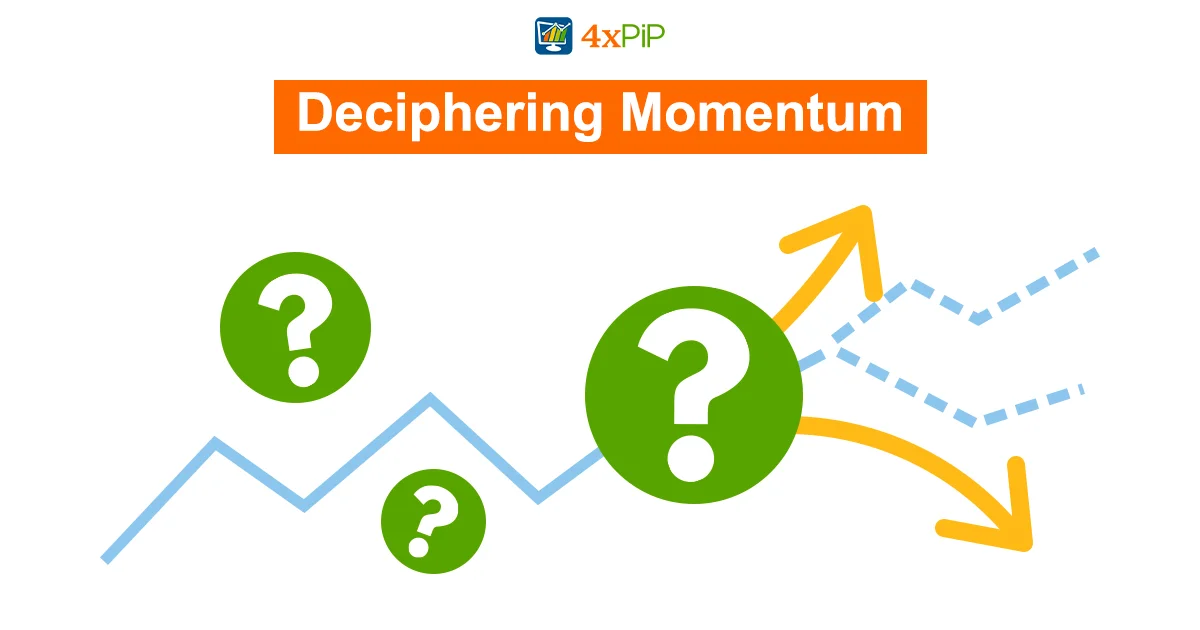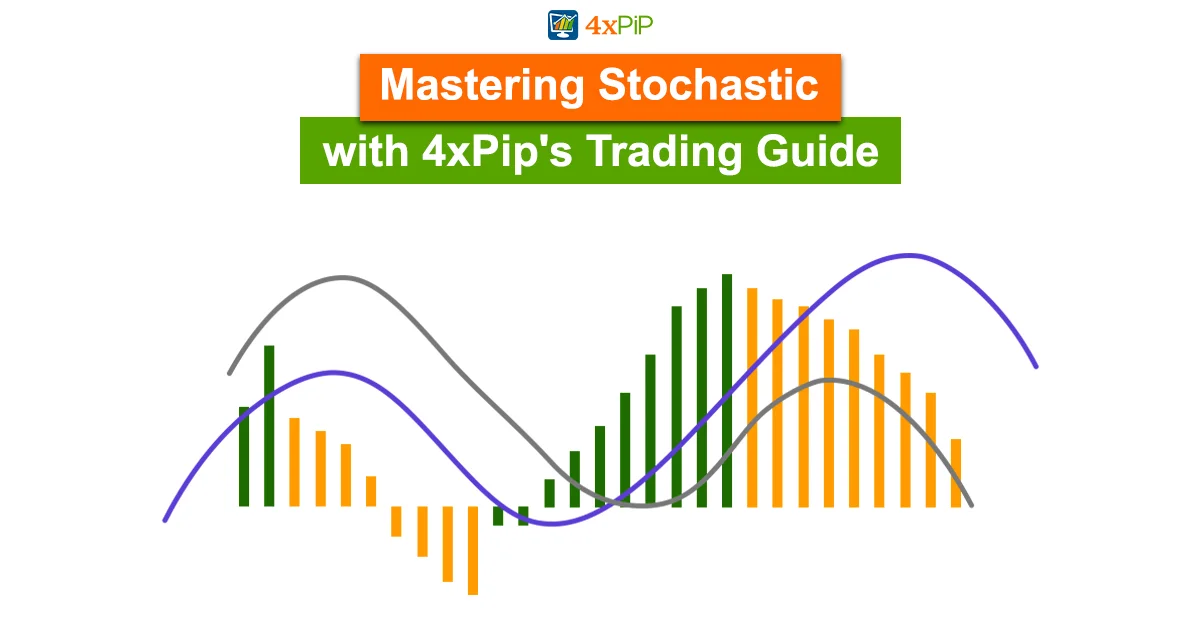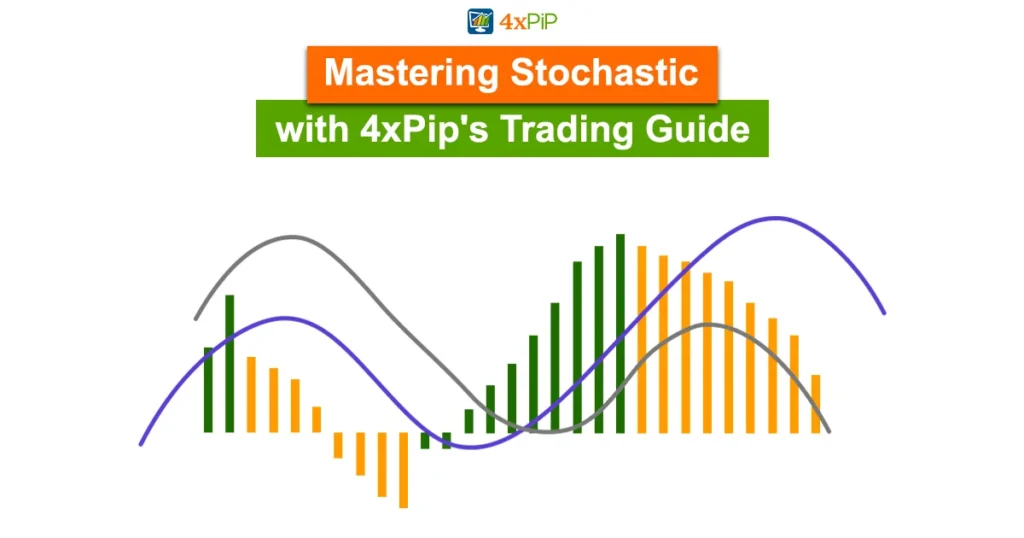In this comprehensive guide, 4xPip is here to demystify the Stochastic Indicator, shedding light on its nuances and empowering you with practical insights for effective trading.
Understanding the Stochastic Indicator:
A Stochastic indicator is a helpful tool for traders, giving insights into momentum and trend strength. Created by George Lane, it acts like a radar for changes in the speed and intensity of price movements. Picture a rocket—before changing direction, it first slows down. The Stochastic helps you catch these momentum shifts.
Deciphering Momentum:

Before we delve into Stochastic details, let’s grasp the idea of momentum—it’s like the speedometer for a stock’s price. Knowing this helps us understand how the Stochastic interprets price movements.
Cracking the Stochastic Calculation:
The Stochastic looks at a price range over a specific time, usually 14 candles. It considers the highest high, lowest low, and the current closing price. It’s a simple calculation, but it reveals a lot. It tells us how close the current closing price is to the absolute high or low, giving us insights into the price range dynamics.
Example 1: High Stochastic Number:
When the Stochastic is high, it means the price closed near the range’s top. By calculating the percentage proximity of the close to the highest high, we get an idea of the strength of the uptrend.
Example 2: Low Stochastic Number:
Conversely, a low Stochastic value tells us there’s strong downward momentum. Analyzing the distance between the close and the lowest low helps us gauge the intensity of the downtrend.
Overbought vs. Oversold Myth:
Contrary to what many think, the Stochastic doesn’t label prices as overbought or oversold. It’s more about gauging momentum. A Stochastic above 80 doesn’t mean overbought; it just signals a strong uptrend. Similarly, a Stochastic below 20 doesn’t mean oversold; it suggests a potent downtrend.
Mastering Stochastic Signals:
Let’s go through the common signals the Stochastic provides:
Breakout Trading: When the Stochastic suddenly accelerates in one direction with widening bands, it can signal the start of a new trend.
Trend Following: A Stochastic above 80 confirms a bullish trend and below 20 points to a bearish trend.
Strong Trends: In overbought/oversold areas, hold onto trades in line with the trend.
Trend Reversals: A change in Stochastic direction can indicate a potential trend reversal.
Divergences: When the indicator and price action show opposing signals, it hints at potential reversals or trend endings.
Enhancing Stochastic with Other Tools:
Combine the Stochastic with moving averages, price patterns, and trendlines for more robust signals:
Moving Averages: Trade in the direction of moving averages for filtered signals.
Price Patterns: Breakouts or reversals with accelerating Stochastic after patterns can signal successful moves.
Trendlines: Effective for trading Stochastic divergences or reversals in line with established trends.
Recap: How to Use the Stochastic Indicator
While simple, the Stochastic indicator adds objectivity to your trading decisions, preventing subjectivity. It provides key trend information, emphasizing the importance of understanding your tools for effective application.
In this guide, 4xPip has unraveled the complexities of the Stochastic Indicator. For further assistance and to explore automation tools, visit 4xPip. Contact our experts at [email protected].
Conclusion:
Empower your trading journey by mastering the Stochastic indicator. 4xPip is your guide, ensuring you not only comprehend its mechanics but also apply it effectively. Don’t just trade—trade smart with 4xPip.





